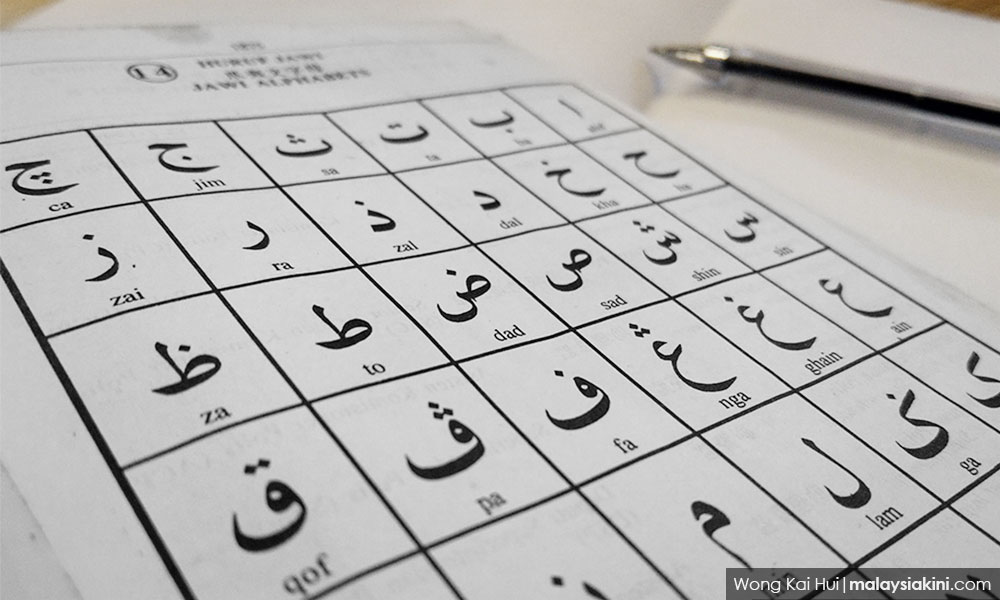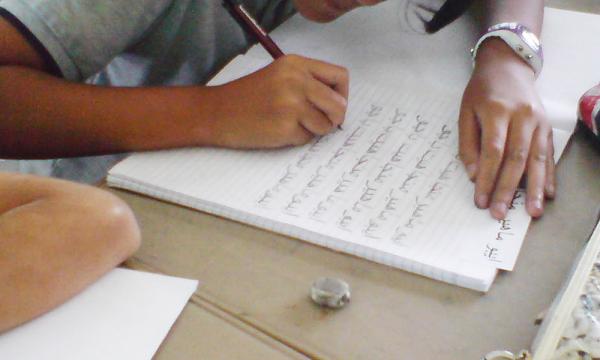COMMENT | A friend and fellow activist asked for my views regarding the khat issue. I will try and articulate it in the best way possible.
In the first place, just like the Selangor unilateral conversion bill, I am unclear as to how the proposal to implement khat lessons within our school curriculum came about.
What is behind this call? In the face of the education curriculum that we have now, why is this being prioritised above other core matters that has direct social implications on the students and that needs the Education Ministry's imperative support and implementation, e.g: comprehensive sexuality education in all schools, public, private and vernacular schools, to address issues of child marriage, baby dumping, life-long decision making when it comes to sexual and reproductive health and rights, etc.
I have no objections to khat. I am a novice at calligraphy, lettering and khat myself.
Doing work on women’s rights and being involved in various kinds of campaigns and communications on issues, I am beginning to take more interest in how the choice of lettering and typefaces can bring further impact to the message of the campaigns conducted.
I have been rather narrow in my preferences, so this is a whole other world to explore and one that brings much joy as well.

I don’t think that the art of khat is dying. If anything, it is being revived. At the recent Kuala Lumpur International Book Fair (which is only one platform that I witnessed and I am sure there are many others) there were all kinds of materials that were being promoted to encourage the public to try their hand in khat.
There were exchanges on the different kinds of brushes, inks, paper and practice materials to use. As with any art form, there’s always the initial investment that one has to make to start off.
As with any other art form, it takes hours of practice to produce a piece of work that one is satisfied with and then, more study and practice to create works that one is prepared to share with the rest of the world.
With the above realisation in mind, one of the questions during the whole debate which I had wondered was, who is going to be teaching khat as part of the school curriculum?
How will teachers in school be trained and what resources will be needed to ensure that they will be well-equipped to teach this? Given that there are more urgent priorities, my conclusion is that khat should be taught in art classes and be made optional, rather than compulsory.
There have been other developments since, but the public discourse has deteriorated terribly to the following political and binary positions:
Khat = Islamisation, and in response, rejection to khat = Islamophobia.

It doesn't help the conversation at all. Not when discord and mistrust have been sowed for decades between different ethnicities and interest groups in both the promotion and defence of religion, languages, school systems and many other issues on the grounds of ethnic and religious-centrism, as well as of nationalism.
We are still mired in racism. That is the reality. We need to be aware of how we manoeuvre ourselves forward and go beyond the binary and the usual way of thinking, talking and doing, if we are to move forward as a developed and leading knowledge-based nation in Asean and globally.
Khat is related to aesthetics and all cultures have their own forms of aesthetics manifestation and appreciation and this is what needs to be exposed and taught to the students.
I wish the Education Ministry would overhaul the appreciation of Malaysian culture in our school curriculum.
Not just khat, but also other forms of calligraphy, and all other cultural forms that we have in our Malaysian cultures from various ethnicities and indigenous groups – art, dance, music, theatre, language, literature, culinary arts, textiles etc.
More school trips and cross-cultural exposures to galleries, museums, theatres, and interactions with everyone in and behind the scene – masters, amateurs and communities who are working hard to keep these various forms of arts alive in our modern realities.
This is only one suggestion amongst many other ways that are needed to undo what has been done to us for so long.
Only then can we be connected to, and more accepting of, the diversity of cultures that exist within our society and not be easily subjected to fearmongering because of our own unfamiliarity and lack of knowledge.
ROZANA ISA is executive director of Sisters in Islam.
The views expressed here are those of the author/contributor and do not necessarily represent the views of Malaysiakini.


